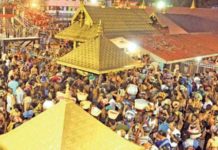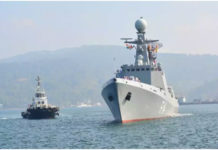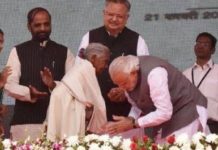A part of Varsha Deiveegan’s Torts project dealt with what happened in Bhopal on 3rd Dec, 1984. This tragedy is termed as one of world’s worst industrial disaster. Here’s a synopsis of the same.
On the fateful night of December 2nd 1984, when thousands of people were dreaming of their prospective futures in their peaceful sleep, the city of Bhopal was choked with tons of Methyl Isocyanate (MIC) from the Union Carbide India Limited (UCIL) plant. In what is called the worst disaster around thousands were killed; around 3800 according to the government of Madhya Pradesh, though municipal workers who helped in mass burials claim they laid down over 15,000 bodies to rest!
For the world, the tragedy came as a outrage and for those victims, the gas leak mutated the various courses life could have taken had the disaster not struck. The official death figures hold no significance when it comes to the fact that at least 120000 people still suffer with partial disablement,eye problems, respiratory difficulties, immune and neurological disorders, cardiac failure secondary to lung injury, female reproductive difficulties and birth defects among children born to affected women. A survey says that at least 15-20 people die every month. Dismally, life never returned to calm normalcy that prevailed before the doomed night of December 2nd in the City of Lakes.
What comes as a shock is the indifference the Union Carbide Corporation (UCC) and the Government of India showed with respect to the consequences that followed.
The UCC’s claim that the data on toxic effects is a trade secret and the alleged role of the government in letting off Warren Anderson and the blame-game that has questioned the judiciary’s delay in the case. The disaster still continues!
The UCIL plant was set up in 1969 in what was called an area zoned for light industrial use near Bhopal though the area was densely populated; the plant’s purpose being the production of a pesticide called Sevin. For this purpose, an MIC plant was added in the year 1979 with the sole aim of cutting down costs, as MIC was more hazardous but less expensive than most others materials used in the production. The company eventually ceased operations owing to drought resulting in lesser demand for Sevin though the tanks held tons of MIC. Various stories concerning the leak were alleged. Seemingly, on the night of December 2nd, when an employee was flushing a corroded pipe, multiple stopcocks failed and allowed water to flow freely into the largest tank of MIC. This led to an uncontrolled reaction; the tank was blown out and spewed its contents into a deadly cloud that settled over much of Bhopal.
Investigations revealed that the plant was poorly maintained; UCIL, in order to cut costs, stored the gas in tanks instead of steel drums; left the pipelines to corrode and most importantly didn’t check the safety mechanisms; even the alarms were not in place. The company ignored all possible warning signals from both internal as well as external sources. The leakage of hazardous chemicals such as Phosgene, MIC, Chlorine, Monomethylamine and Carbon Tetra Chloride leaks had almost become commonplace in the plant in the 1980s. In December 1981, a gas leak at the Union Carbide plant killed one worker.
A year later, in January 1982, there was another gas leak in which 25 workers were hospitalised. Workers protested that there was design defect in the plant that made it unsafe but the protests fell on deaf ears.
Two years later, Union Carbide sent its US experts to do an audit. The team noticed leakage in the plant. In September 1982, UCIL de-linked the alarm from the siren warning system so that only their employees would be warned about the leakage, and not the neighbouring residents. A year later, another leak was reported from the plant which left 100 residents hospitalised.
On March 4, 1983, Bhopal lawyer, Shahnawaz Khan served a legal notice on UCIL. But on April 29, 1983, in a written reply, UCIL’s Works Manager denied the allegations as baseless. Between 1983 and 1984, the safety manuals were re-written to permit among other things switching off the units that cooled the MIC gas and prevented chemical reactions.
A journalist by name Rajkumar Keswani cautioned the administration with various articles that UCIL was perilous. His last article, ‘Bhopal Sitting on a Volcano’, was published just months before the tragedy. Nevertheless, his opinions were disregarded. So, it is evident that the company knew the possible menaces but deliberately chose to ignore them.
As a matter of fact, six safety systems, that were negligently left in a dilapidated condition, failed. People woke up with thundering coughs, watering eyes and frothing mouths. In what felt like an apocalypse, many of them lost control over their bodies when the gas invaded their lungs. The doctors were least prepared to face such a situation and the UCIL’s refusal to suggest effective treatments, intensified the catastrophe.
The legal formalities that ensued were was outrageous and even more traumatic for the victims. On December 7th, a multi million dollar lawsuit was filled in the US by attorneys. But in 1987, the case was transferred to India on a basis that UCIL was separate entity, owned, managed and operated exclusively by Indian citizens in India. The government of India passed the Bhopal Gas Leak Disaster Act thus appointing itself as the sole representative of the victims. In the year 1989, UCC accepted moral responsibility and settled 470 million dollars out of the 3 billion dollars. The victims felt duped as they were not consulted and the people who were given the compensation are no better off than those who weren’t. What is common to all of them are the health disorders that keep them away from working. The gas plagued the residents of Bhopal with ailments that will now pass on for generations to come!
Warren Anderson was the CEO of the plant. As an indication of the deceptive concern towards the people of Bhopal, he landed in India on December 7th, 1984 and was placed under a house arrest which was more tactical than apprehensive in nature. It is suspected that Warren Anderson was guaranteed that no action would be taken against him and that he would not receive any rage from the doomed Bhopalis. As a strong confirmation of this, Anderson was released six hours later. He was flown back to Delhi on the official plane of Madhya Pradesh Chief Minister, Arjun Singh. Anderson never returned to India, defying a series of court summons.
The local government charge sheeted Anderson in 1991 with manslaughter. For years, he remained untraced, thereby ignoring an international arrest warrant and several court summons. In 2002, Greenpeace found him living a luxurious life in Hamptons, USA. Neither the American nor the Indian government were interested in troubling him with an extradition then. What the Indian government was keen on was the hefty compensation it expected from UCIL. The extradition theory came after the outcry of many
The UCC, charged with culpable homicide, refused to appear before an Indian court. Union Carbide remained liable for the environmental devastation for its operations have caused ¾ environmental damages were never addressed in the 1989 settlement. U.S. and international corporate law dictate that these liabilities became the property of the Dow Corporation when it purchased Union Carbide in 2001. However Dow has consistently and stringently maintained that it isn’t liable for the Bhopal disaster.
In what seemed like a reopen of the case, eight officials of the company were held guilty under Sections 304(A) (Causing death by negligence– Whoever causes the death of any person by doing any rash or negligent act not amounting to culpable homicide shall be punished with imprisonment of either description for a term which may extend to two years, or with fine, or with both.), 304(2) (culpable homicide not amounting to murder), 336 (endangering life or personal safety of others- Whoever does any act so rashly or negligently as to endanger human life or the personal safety others, shall be punished with imprisonment of either description for a term which may extend to three months or with fine which may extend to two hundred and fifty rupees, or with both. ), 337 (Causing hurt by act endangering life or personal safety of others.– Whoever causes hurt to any person by doing any act so rashly or negligently as to endanger human life, or the personal safety of others, shall be punished with imprisonment of either description for a term which may extend to six months, or with fine which may extend to five hundred rupees, or with both.) and 338 (Causing grievous hurt by act endangering life or personal safety of others.– Whoever causes grievous hurt to any person by doing any act so rashly or negligently as to endanger human life, or the personal safety of others, shall be punished with imprisonment of either description for a term which may extend to two years, or with fine which may extend to one thousand rupees, or with both. Of wrongful restraint and wrongful confinement) of the Indian Penal Code. The maximum punishment under this provision is 2 years. A Group of Ministers (GoM) was constituted, which, in its final report, recommended a Rs 1500 crore which also includes Rs 5 lakh for those permanently disabled or suffering from critical ailments and Rs 3 lakh for those who have been partially debilitated. This compensation would be settled after deducting the earlier compensation. The most important thing is that Union Carbide CEO Warren Anderson is still absconding. Eight people, including former Union Carbide India chairman Keshub Mahindra, were found responsible for negligence that led to the death of countless Bhopalis. The sentence given is for a maximum of two years in prison and/ or a fine. All of those convicted had already been released on bail for Rs. 25,000 each.
The charges against those that were found guilty were framed under Section 304A of the Penal Code—the provision used most frequently for traffic accidents.
Alas! Justice seems to be a far cry for Bhopal!
Further reading:
http://www.indianexpress.com/news/bhopal-gas-tragedy-a-timeline/655011/0,
http://www.thehindu.com/opinion/op-ed/article484155.ece
http://www.thehindu.com/opinion/op-ed/article450106.ece
If you have any doubts or opinions, mail us at lamenessgk@clatgyan.com (Don’t laugh at us, please :D)
Best,
CG.















Do read ‘The Week”s cover story on Satinath Sarangi, at http://week.manoramaonline.com/cgi-bin/MMOnline.dll/portal/ep/theWeekContent.do?contentType=EDITORIAL§ionName=COVER STORY&programId=1073755753&BV_ID=@@@&contentId=8428555
thnks a lot karthik 🙂
Thanks! Quite exhaustive.
I had earlier myself written a article [http://theviewspaper.net/bhopal-gas-tragedy-the-catastrophe-flawed-investigation-and-the-legal-tangles/] on this (and a few others) as a part of some internship, so was even more interesting for me 🙂
nice one!!
well!! can some one do some work on current g.k.!!! like some productive lists….
Nitesh, we’ll need more than that to start out with our work. Be specific, please.
thanks a grt work
Bertrand Russell~ Man needs for his happiness not only the enjoyment of this or that but hope and enterprise and change.